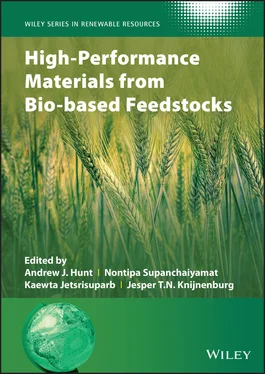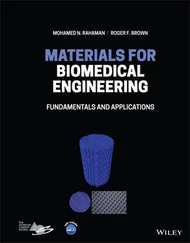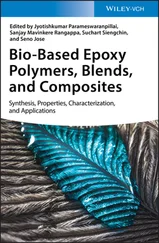High-Performance Materials from Bio-based Feedstocks
Здесь есть возможность читать онлайн «High-Performance Materials from Bio-based Feedstocks» — ознакомительный отрывок электронной книги совершенно бесплатно, а после прочтения отрывка купить полную версию. В некоторых случаях можно слушать аудио, скачать через торрент в формате fb2 и присутствует краткое содержание. Жанр: unrecognised, на английском языке. Описание произведения, (предисловие) а так же отзывы посетителей доступны на портале библиотеки ЛибКат.
- Название:High-Performance Materials from Bio-based Feedstocks
- Автор:
- Жанр:
- Год:неизвестен
- ISBN:нет данных
- Рейтинг книги:5 / 5. Голосов: 1
-
Избранное:Добавить в избранное
- Отзывы:
-
Ваша оценка:
- 100
- 1
- 2
- 3
- 4
- 5
High-Performance Materials from Bio-based Feedstocks: краткое содержание, описание и аннотация
Предлагаем к чтению аннотацию, описание, краткое содержание или предисловие (зависит от того, что написал сам автор книги «High-Performance Materials from Bio-based Feedstocks»). Если вы не нашли необходимую информацию о книге — напишите в комментариях, мы постараемся отыскать её.
High-Performance Materials from Bio-based Feedstocks
The latest advancements in the production, properties, and performance of bio-based feedstock materials
www.wiley.com/go/rrs High-Performance Materials from Bio-based Feedstocks
High-Performance Materials from Bio-based Feedstocks
High-Performance Materials from Bio-based Feedstocks — читать онлайн ознакомительный отрывок
Ниже представлен текст книги, разбитый по страницам. Система сохранения места последней прочитанной страницы, позволяет с удобством читать онлайн бесплатно книгу «High-Performance Materials from Bio-based Feedstocks», без необходимости каждый раз заново искать на чём Вы остановились. Поставьте закладку, и сможете в любой момент перейти на страницу, на которой закончили чтение.
Интервал:
Закладка:
Biomass is a natural material grown by solar energy and comprises the world’s natural resources such as plants, animals, vegetables, and animal waste or organic waste. Biomass can be classified into two main types as illustrated in Figure 2.2. First, lignocellulosic materials are found in wood from natural forests and agricultural residues. The chemical compositions of general lignocellulosic materials are displayed in Table 2.1. These structures are primarily derived from carbon (C), hydrogen (H), and oxygen (O) atoms. The proper thermal processes can convert lignocellulose into carbon‐based materials that possess strong structures, which are suitable as a catalyst or catalyst support. Lignin is the hardest fraction in biomass and requires a high temperature for destruction. Second, non‐lignocellulosic materials, which can be obtained from algae, animal manure, sewage sludge, and others, contain a distinct proportion of proteins and lipids instead of lignocellulose. The non‐lignocellulosic carbon material generally has low strength and a nonrigid structure. According to the literature review, carbon‐based materials can be derived from several methods depending on the applications. In catalysis, the carbon material can play two roles, namely as a catalyst and as catalyst support. The required strength and rigidity under various reaction conditions mean that such carbon materials are typically obtained from lignocellulosic biomass resources rather than non‐lignocellulosic ones.
2.2.1 Wood from Natural Forests
Many types of wood can be exploited as a carbon source since their major components are carbon‐rich cellulose, hemicellulose, and lignin. Cellulose is a basic component of wood cell walls consisting of a long chain linear polysaccharide of glucose. Hemicellulose, on the other hand, is a lower‐molecular‐weight polysaccharide, and its structure is weaker than cellulose. Finally, lignin, which acts as a binder of wood cells, is a highly branched polyphenolic molecule with a complex structure and high molecular weight resulting in the relatively high hardness and rigidity of wood. The ratio of the major components in wood depends on the geographical location and growth conditions. Red oak or Quercus rubra was analyzed by decomposition using thermogravimetric analysis (TGA) in the absence of oxygen. The weight loss started at 200 °C because of hemicellulose decomposition, and the weight loss increased again at 290 °C due to the decomposition of cellulose. The lignin decomposed at a maximum temperature of 360 °C [11]. A suitable temperature to convert lignocellulosic materials into a biochar or activated carbon should therefore be more than 360 °C. To confirm this, when birchwood was carbonized at 280 °C, the cellulose fraction was close to zero, while the lignin fraction still appeared [12]. The cellulose content should thus be considered when selecting lignocellulosic materials for carbon material production.
The major components of several wood types are presented in Table 2.2. Some wood types that have a low cellulosic percentage conversely have high lignin content, e.g. Japanese cedar and eucalyptus. Although each type of wood displays differences in the amount of cellulose and lignin, the temperatures for their conversion into carbon‐based materials are similar when the combined cellulose and lignin content is more than 70%. The temperature for wood transformation was evaluated from the total amount of cellulose and lignin, which should be in excess of 360 °C. Pragmatically, the thermal conversion of wood usually operates at much higher than 360 °C to ensure that the volatile matter, which is an unwanted matter in this process, is removed from the feedstock structure. The volatile matter that is generated during carbonization usually consists of condensable (i.e. water vapor and light hydrocarbon) and non‐condensable gases (i.e. nitrogen, hydrogen, and carbon monoxide). When eucalyptus was transformed by flash pyrolysis at 400 °C, the weight loss was only 9% while the resulting surface area was 37.52 m 2g −1. The majority of components were still present in the wood structure due to its incomplete carbonization [19]. Until the temperature reached 600 °C, the weight loss increased to 30%, and the surface area increased up to 367.25 m 2g −1. This indicated that the decomposition of the lignocellulosic structure was complete at 600 °C. Thus, the temperature for wood decomposition should be higher than the experimental results. The temperature widely used for wood decomposition is higher than 500 °C [20–22]. The ultimate analysis of wood shows the same range of carbon content of 40–50%, 5–7% of hydrogen, and 1% of nitrogen and oxygen [22, 23], which implies that the amount of each element inside the material is not directly related to the composition of lignocellulosic materials. On the other hand, proximate analysis can give more interesting properties such as fixed carbon, volatile matter, ash, and moisture content. The fixed carbon is the carbon structure that remains as a residue after all the volatile matter has been removed, and is essential to evaluate the suitability of a feedstock for the production of carbon material. Fir consisted of high cellulose of 45.00% and carbon content of 47.20%, but it contained only 10.50% fixed carbon [24]. This means that after undergoing the same thermal process, the carbon product yield from Eastern red cedar was higher than that from fir trees. Moreover, the carbon product yield can be evaluated from the volatile matter content since these are inversely related. The moisture content should be considered as well because it can assess the energy of the thermal process. Fixed carbon and moisture content of Japanese cedar were 17.60% and 15.50%, respectively, while those of eucalyptus were 18.82% and 9.40%, respectively. Seeing that the carbon product yield obtained from eucalyptus and Japanese cedar was almost the same, the thermal conversion of eucalyptus required less energy [14, 25].
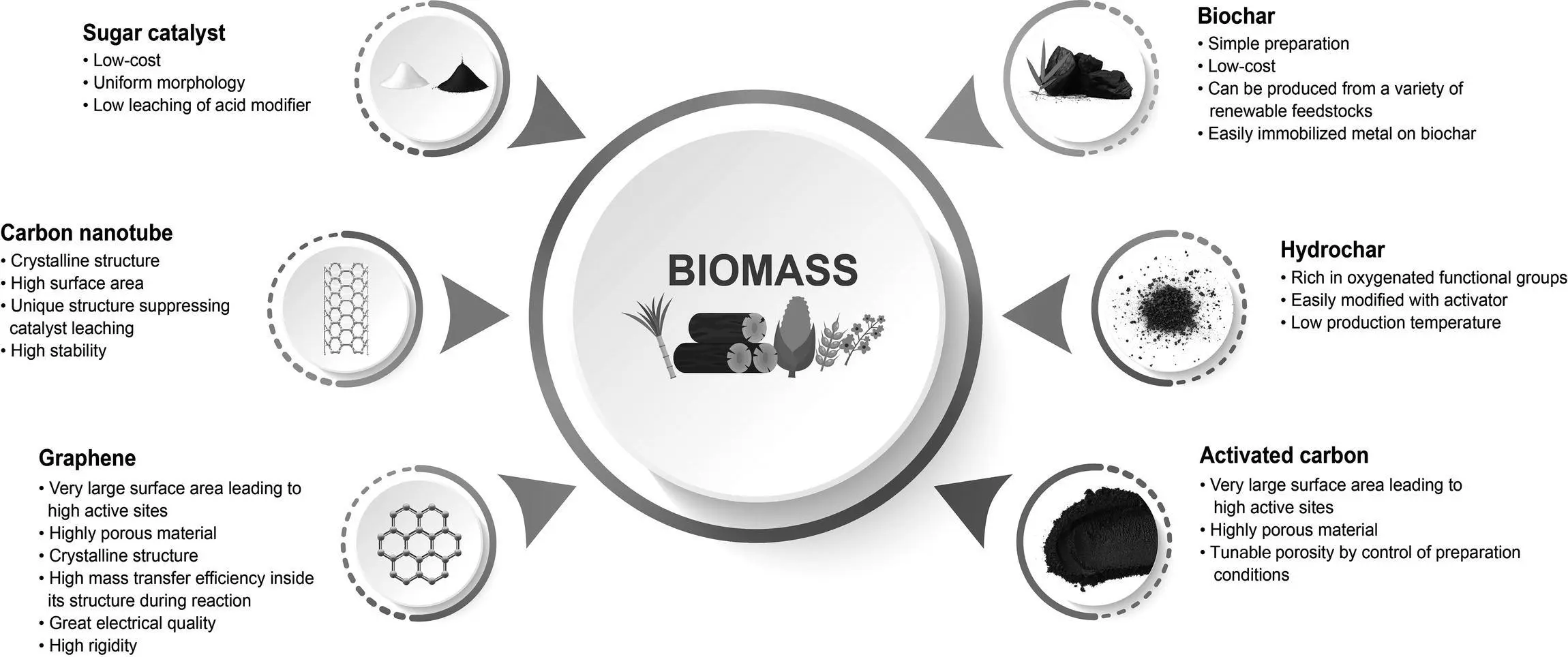
Figure 2.1 Some advantages of bio‐based carbon materials.
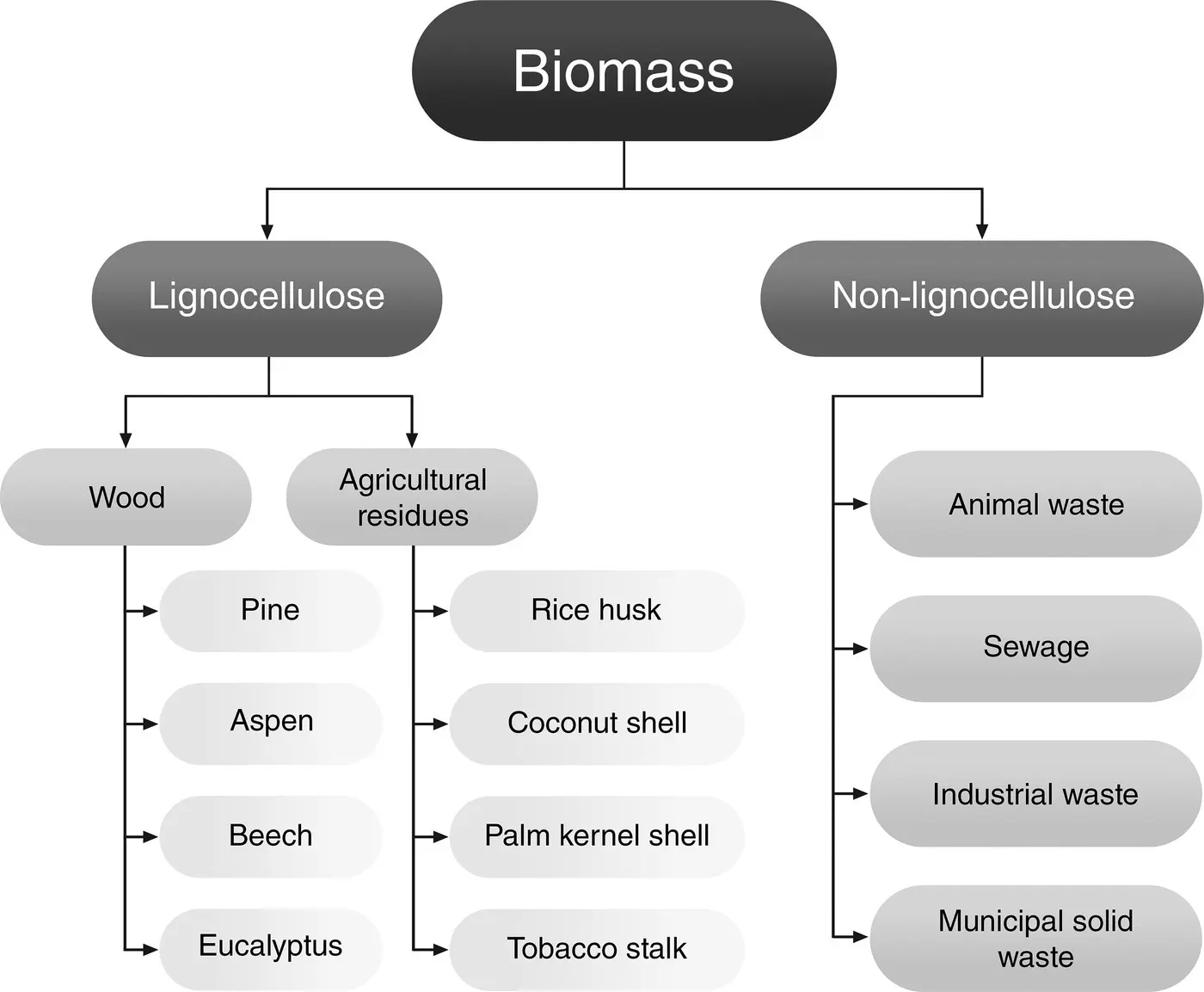
Figure 2.2 Classification of biomass.
Table 2.1 Weight ratio of chemical compositions in lignocellulosic materials Based on [10].
| Chemical compositions | Content (wt%) |
|---|---|
| Cellulose (C 6H 10O 5) n | 25–50 |
| Hemicellulose | 15–40 |
| Lignin | 10–40 |
| Extractives and minerals | 1–15 |
Table 2.2 Chemical components in various wood categories [13–18].
| Feedstock | Contents (%) | |||
|---|---|---|---|---|
| Cellulose | Hemicellulose | Lignin | Others | |
| Pine | 46.90 | 20.30 | 27.30 | 5.50 |
| Fir | 45.00 | 22.00 | 30.00 | 3.00 |
| Aspen | 47.14 | 19.64 | 22.11 | 11.11 |
| Beech | 46.40 | 31.70 | 21.90 | 0.00 |
| Japanese cedar | 38.60 | 23.10 | 33.80 | 4.50 |
| Eucalyptus | 34.70 | 27.30 | 35.80 | 2.20 |
2.2.2 Agricultural Residues
Agricultural residues are cellulosic materials that are discarded from agricultural or agro‐industrial processes. Much literature has reported the production of carbon‐based materials from several kinds of agricultural residues, of which rice husks and rice straw are the most extensively used [26, 27]. Rice husk contains 37.00% cellulose, 23.43% hemicellulose, and 24.77% lignin, while rice straw contains 34.53% cellulose, 18.42% hemicellulose, and 20.22% lignin [25]. The rice husks and rice straw had a lower hardness than wood because the total amounts of cellulose and lignin present in rice husks and rice straw were lower than 70%. After thermal treatment, the carbon material obtained from rice husks and rice straw were powders with low hardness [28]. Additionally, the rice husks and rice straw still had a substantial total carbon and fixed carbon content. When comparing rice husks to rice straw, the carbon content was 41.92% and 36.07%, with a fixed carbon content of 11.44% and 6.93%, respectively [29]. The rice husks were probably a more suitable feedstock for the production of carbonaceous material.
Читать дальшеИнтервал:
Закладка:
Похожие книги на «High-Performance Materials from Bio-based Feedstocks»
Представляем Вашему вниманию похожие книги на «High-Performance Materials from Bio-based Feedstocks» списком для выбора. Мы отобрали схожую по названию и смыслу литературу в надежде предоставить читателям больше вариантов отыскать новые, интересные, ещё непрочитанные произведения.
Обсуждение, отзывы о книге «High-Performance Materials from Bio-based Feedstocks» и просто собственные мнения читателей. Оставьте ваши комментарии, напишите, что Вы думаете о произведении, его смысле или главных героях. Укажите что конкретно понравилось, а что нет, и почему Вы так считаете.
